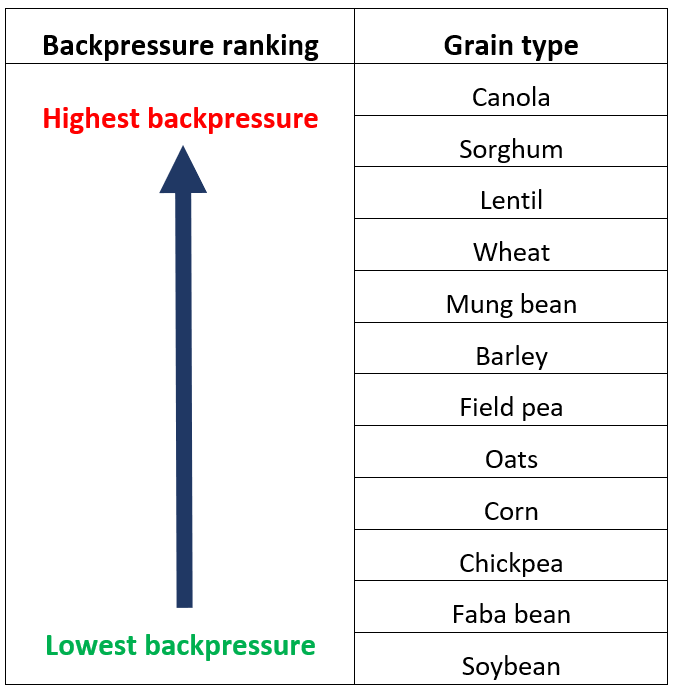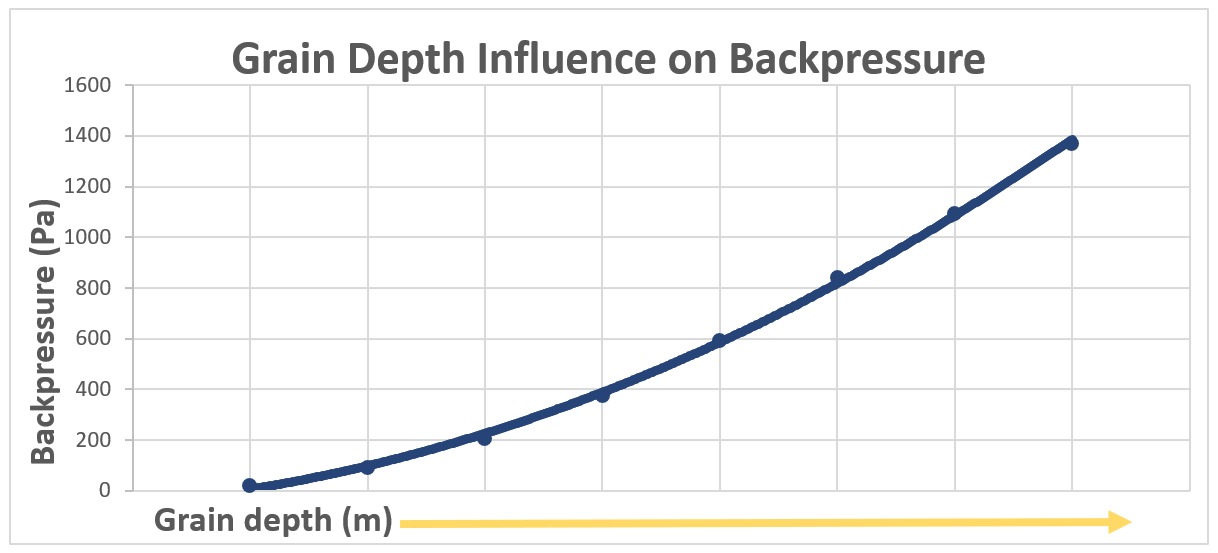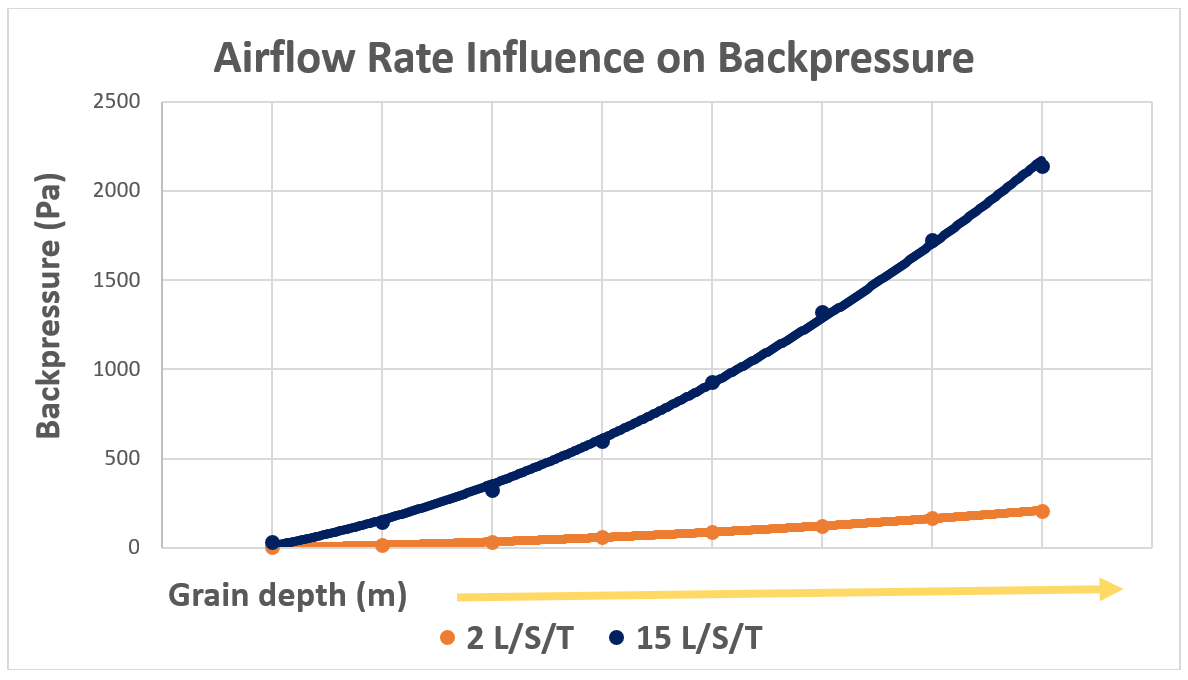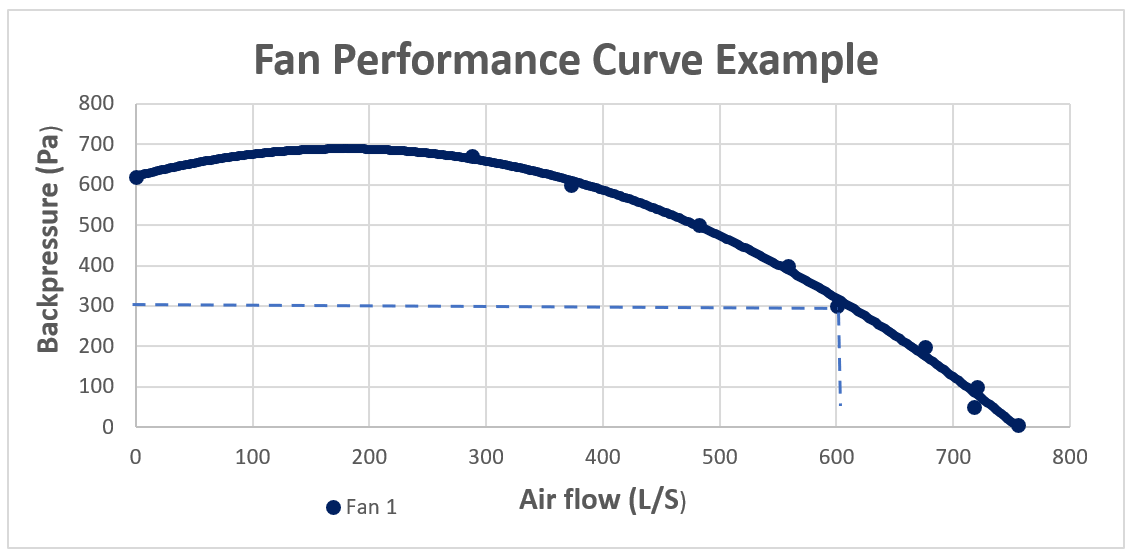Achieving cool grain temperatures in storage through well designed aeration systems
Achieving cool grain temperatures in storage through well designed aeration systems
Author: Alex Conway (Control Unlimited & GRDC Grain Storage Extension Team) | Date: 07 Mar 2024
Take home message
- Aeration cooling is one of the most effective tools to combat stored grain insect pests and mould development in stored grain
- Grain storage aeration systems should be set up to achieve airflow rates of 2 to 4 litres of air, per second, per tonne of grain (L/s/t) for cooling or 15 to 25 L/s/t for drying
- Grain temperature under 23°C during summer storage and less than 15°C during winter are best to maintain grain quality and manage insect and pathogen incursion
- New research is assisting with aeration system design and fan performance to achieve the best results
- Monthly monitoring ensures aeration systems are operating effectively.
Grain is a living organism that deteriorates over time and this process is accelerated by heat and moisture. If left unattended this leaves grain more susceptible to mould and insect infestation. One of the most effective tools to protect grain quality is to use a well-designed aeration cooling system in grain storage facilities. When considering aeration systems there are several critical factors to consider that are discussed in this paper.
Until recently, grain storage aeration design was based on American research from 1951 and was used to guide manufacturers on key parameters relevant to design. Recent developments made possible through GRDC investment has resulted in updated information for aeration system design specific to Australian grain types, and conditions. As part of this development, fan performance testing has been conducted on a range of the most commonly used aeration fans and results are discussed here. The aim of this work was to provide improved outcomes to manufacturers and growers on performance and features necessary for Australian grain storage conditions.
Aeration backpressure
Aeration backpressure is a key metric defining the performance of an aeration system and is a function of 3 major parameters: grain type (e.g., canola c.f., wheat), grain depth and airflow rate. The GRDC Grain Storage Extension Team recently tested 12 different grain types using these three criteria and are currently in the process of consolidating these results through an extensive array of on-farm field tests at storage facilities across the country. The effect that each factor has on the performance of an aeration system is illustrated below.
Grain type
Grain type and size have a large impact on the performance of aeration systems. The grains tested (Figure 1) are presented in order from highest to lowest backpressure. Interestingly, canola indicates backpressures up to 2.4 times greater than wheat, which has a significant effect on the ability to move air through a parcel of grain.
Figure 1. Grain types ranked in order of backpressure level.
Grain depth
The interaction between the backpressure in an aeration system and how it increases non-linearly as the grain depth increases is shown in Figures 2. This means that higher airflow rates can be achieved by simply reducing the grain depth.
Figure 2. Relationship between backpressure and grain depth in stored grain.
Airflow rate
The dramatic difference in backpressure between an airflow of 2 L/s/t (for cooling) and 15L/s/t (for drying) is shown in Figure 3. These results highlight the importance of ensuring that an aeration system is sized correctly to suit its desired application for cooling or drying.
Figure 3. Relationship between backpressure and airflow rate in stored grain.
Aeration fan performance
Another key factor in aeration system design is the correct aeration fan(s) and motor sizing. This is undertaken by cross checking the expected backpressure against a fan performance curve. The GRDC Grain Storage Extension Team has recently conducted performance testing on a range of aeration fans supplied by four silo manufacturers. The aim of this work was primarily to equip manufacturers with the data to ensure aeration systems supplied perform as the grower requires.
Figure 4. Comparison between various fan performance curves – a correctly sized fan is critical.
In the above example (Figure 4) the fan performance curve can be interpreted by interrogating a given fan backpressure point– for example 300 Pascals can operate at a corresponding flow rate of 600 litres per second. It’s important to remember that adding multiple fans to a silo to increase airflow and even distribution, will also increase overall backpressure. So, the second and third fans won’t double and triple airflow, they may only add another 50% airflow depending on the fans performance curve and how many are added.
Fundamental targets
Appropriate airflow rates
Airflow rates measured in grain storage are most typically referred to in litres of airflow, per second, per ton of grain (L/s/t). Targeting the correct airflow rate is extremely important as without sufficient airflow the grain becomes increasingly susceptible to mould development and insect infestation. Measuring aeration fan airflow is not difficult and can be undertaken using the GRDC Grain Storage Fact Sheet ‘Performance testing aeration systems’. The optimal airflow rates for both long-term grain maintenance (e.g. cooling airflow rates) and ambient air grain drying (e.g. drying airflow rates) are as follows:
- Cooling airflow rate: 2 – 4 L/s/t
- Drying airflow rate: 15 – 25 L/s/t
Safe storage temperatures
Regular monitoring of grain temperature is integral to ensuring seed stored for planting purposes maintains acceptable seed viability. Cool storage conditions also minimise the risk of mould and insect damage. This is most easily monitored using a grain temperature probe and should be checked monthly when checking for insect pests in stored grain. Grain storage aeration systems should target temperatures of:
- Summer: 18–23°C
- Winter: less than 15°C
Monitoring & technology
Grain in storage requires regular and consistent monitoring, just as a crop does throughout the growing season. This allows any problems or equipment faults to be detected early before any significant damage can occur to the grain. A monitoring schedule performed monthly should involve:
- Fan testing: a well-equipped aeration controller will typically provide a ’test’ function that allows the operator to temporarily test each aeration fan for any faults
- Temperature testing: to ensure the grain mass is within the target range for the time of year
- Grain moisture monitoring: to ensure it is remaining constant
- Pest monitoring: check for pests in probe traps and sieve grain samples
Conclusion
The grain storage extension team are providing ongoing test data to industry on both aeration fan performance and backpressures. This will assist both growers and silo manufacturers in ensuring the best aeration cooling results can be achieved through well designed systems targeting airflows of 2 to 4 L/s/t for cooling and 15 to 25 L/s/t for drying. Grain temperatures in summer should aim for between 18 and 23 degrees Celsius, and below 15 degrees in winter. The investment in quality on-farm storage with aeration can be maximised by regular monitoring and maintenance of the system over its lifespan. Our team has recently provided the following video production to assist grain growers manage grain quality and aeration systems.
The series of GRDC online videos for grain storage can be accessed here.
Acknowledgements
The research undertaken as part of this project is made possible by the significant contributions of growers through both trial cooperation and the support of the GRDC, the author would like to thank them for their continued support.
Contact details
Alex Conway
Control Unlimited & GRDC Grain Storage Extension Team
Toowoomba QLD
Ph: 0487 277 766
Email: alex@storedgrain.com.au
Date published
March 2024
GRDC Project Code: PRB2011-001SAX,




